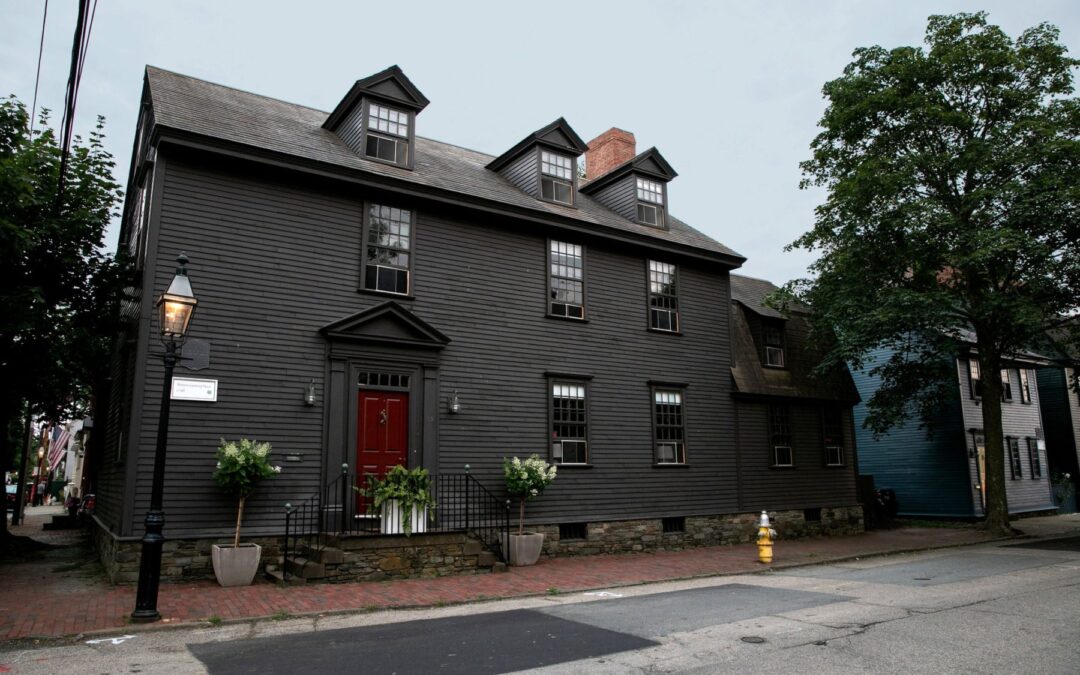
by NRF User | Jul 9, 2019 | NRF News
“Doris Duke did a wonderful thing fifty-some years ago when she preserved these Colonial houses,” he said. “Here we are 50 years later, and it is our responsibility to ensure that the work she did is not lost. To do for Newport a second time what she did for Newport the first time — to save these Colonial properties.” – Mark Thompson, Executive Director, Newport Restoration Foundation
Many thanks to The New York Times for spotlighting the efforts NRF and many others are taking to Keep History Above Water in their piece, ‘We Cannot Save Everything’: A Historic Neighborhood Confronts Rising Seas.
Click here to read the article online.
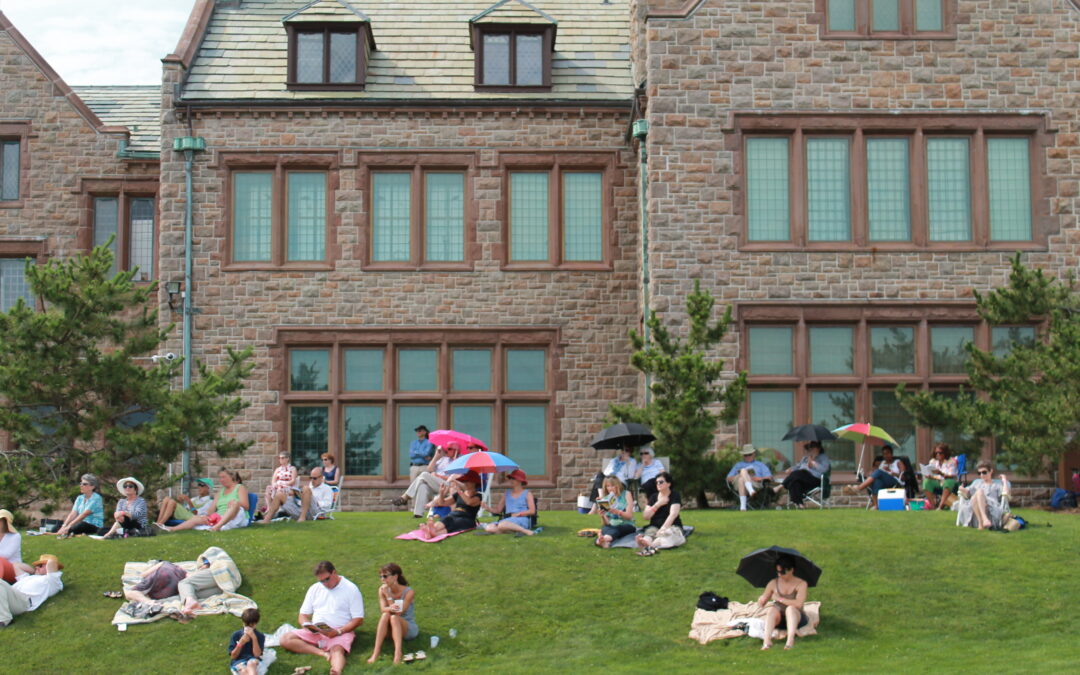
by NRF User | Jun 25, 2019 | NRF News
From Rosé with the Roses, to Jazz on the Lawn, we have something for everyone this summer at NRF! Rough Point Museum, Whitehorne House Museum, and Prescott Farm will offer a variety of free and ticketed programs for all ages and interests. Please mark your calendars for upcoming special events including:
Rosé with the Roses
July 10 / 5:00 – 7:00 pm / $25 / Rough Point Museum
Rough Point’s rose allée bursts into full bloom for a few days every July. Savor this brief and breathtaking event with a glass of rosé in hand. The museum’s exhibits and grounds will be open for strolling. Price includes admission to the museum and one drink ticket. Please note that this program is weather dependent.
Second Sundays
July 14 & August 11 / 12:00 – 3:00 pm / FREE / Prescott Farm
Community comes together to enjoy the largest public open space on Aquidneck Island. Each month NRF joins with a non-profit partner to highlight the expansive history and horticulture of Prescott Farm. Explore the nature trails with our guest guides, chat up URI’s Master Gardeners, or climb inside the historic windmill – themes, guests, and activities change monthly!
July: Middletown & Portsmouth Historical Societies shed light on Prescott’s Capture
August: Gray’s Grist Mill takes us from seed to Johnnycake
The Myth & Mystique of Doris Duke in Newport
July 16 / 5:00 – 7:00 pm / $15 / Rough Point Museum
Almost every Newporter with a long enough memory has a story about Doris Duke. Special guests, including former staff and friends, recount their experiences, and we hope you bring your own recollections to share at this casual event that examines the legends and lore of Doris’s time in Newport.
Creative Survival: African Artisans in Newport
July 22 / 5:00 – 7:00 pm / $15 / Rough Point Museum
Newport was the most active slave port in the British North American colonies, and many of the enslaved Africans who arrived here were placed into training in the artisan trades, including furniture making. This presentation by the 1696 Heritage Group will explore how these African craftsmen and women contributed to colonial Newport’s economic and cultural prosperity.
Jazz on the Lawn
July 24 / 5:00 – 7:00 pm / $15; 12 and under free! / Rough Point Museum
A night that celebrates Doris Duke’s lifelong affinity for jazz music. Join us for an evening of picnic blankets, ocean breezes, and soulful tunes that recalls the early years of the Newport Jazz Festival when Doris was known to bring musicians back to Rough Point for informal musical performances. Featuring Joe Albano and the Jazz Lords, this program will take place outside. In the event of rain, our alternate date will be July 31.
Ask a Gardener
July 27 & August 31 / 11:00 – 11:30 am / Rough Point Museum
Free with house or grounds admission.
Tour the Rough Point grounds in the company of experts – once a month our estate gardeners share their expertise on a range of topics from plant identification to organic garden care. Get insider tips about how the Rough Point staff keeps the grounds looking lush and how to incorporate those practices in your own home garden. This program takes place outside and is weather dependent. Tours meet at the camels.
Creative Survival Installation
July 29 / 5:00 – 7:00 pm / $20 / Whitehorne House Museum
The 1696 Heritage Group takes over Whitehorne House Museum for one night only, telling the stories of the enslaved and free Africans who worked in the artisan trades in colonial Newport. Public historians Theresa Guzman and Keith Stokes lead this small group experience and invite us to see the museum and its furniture collection through the lens of African artisans and their contributions to Newport’s “Golden Age.”
Rough Point Plant Sale
August 3 / 9:30 am – 12:30 pm / Rough Point Museum
You’ll want to save some space in your garden for this sale! Our estate gardeners have culled over 400 perennials from Doris Duke’s historic gardens, and this is your chance to plant a little bit of history in your home garden. One-gallon, five-gallon, and baby plants already rooted in soil will be priced to sell. This program takes place outside and is weather dependent. A rain date is set for August 10.
Floral Design Workshop
August 3 / 10:00 am – 12:00 pm
August 22 / 3:00 – 5:00 pm
$40; advance registration required / Rough Point Museum
Take home a one-of-a-kind reminder of Rough Point’s gardens. Led by estate gardener and floral designer Alyssa Leach, this workshop is for novices and experts alike and borrows inspiration from Doris Duke’s historic flower gardens. Materials included, and participants will each take home a mixed arrangement of their own design.
The Myth & Mystique of Doris Duke’s Inner Circle
August 8 / 5:00 – 7:00 pm / $15 / Rough Point Museum
Most people came to know Doris Duke through newspaper headlines and paparazzi images, but who did Doris count among her close friends and confidantes? While Doris’s name was connected to other celebrities like Andy Warhol, Imelda Marcos, and Jackie Onassis, those who knew her best are less well-known. Join us as we unveil the most intimate and influential relationships in Doris’s life.
Midsummer Celebration
August 13 / 5:00 – 7:00 pm / FREE / Whitehorne House Museum
Celebrate the reopening of Newport’s furniture museum by picking out your new favorite piece of early American furniture or rediscovering the fun of Legos and Tinker Toys. Light refreshments provided in the museum’s colonial revival garden.
For information on all events, visit newportrestoration.org/events.
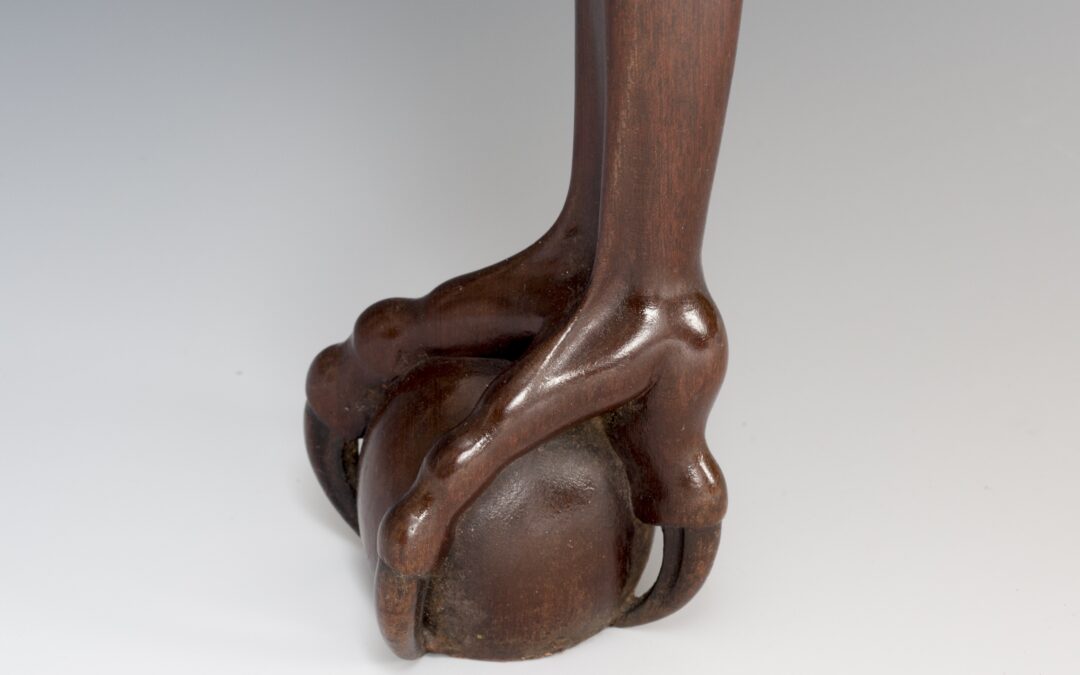
by NRF User | May 16, 2019 | NRF News
Ever since I took on the post of Director of Museums, I have had to learn a lot of information about a lot of different things, from how to get into our offices at Rough Point without setting off the alarm, to an understanding of the life and legacy of Doris Duke. I have also spent a fair amount of time learning about the collection and interpretation of NRF’s museum at the Whitehorne House, which, when it reopens on May 29th, 2019, will be the world’s only museum dedicated solely to the craft, design, and social and cultural histories of 18th-century Newport furniture.
Learning about Newport furniture has become one of my newest passions. I have become fascinated by the design, construction, and history behind these exceptional works of American craftsmanship. I haven’t always felt this way. Like many of you, I had never really thought much at all about historic furniture, let alone been engrossed in learning about the craft and history behind it. But over the past few months, I have come to see that the Whitehorne House Museum’s furniture collection is filled with remarkable works from a world of design and consumerism that, despite their significant age (most pieces are about 250 years old or more), feels quite familiar to me, quite contemporary, and, perhaps surprisingly, relevant to the lived experience of 21st-century people. I get that readers may not see the ways in which Newport furniture and its creation and purchase are analogous to the behaviors of a contemporary consumer, but if you stick with me through this blogpost, I think you’ll see the connection. Let me explain through a brief exploration of feet. You read that right, feet.
The feet I’m referring to are, of course, furniture feet—the base of a piece of legged furniture, such as a desk, table, high chest, or chair. They are, quite literally, the lowest point on any work of furniture, so low and obscure that most of us don’t even pay attention to them. In fact, many pieces of furniture have no distinct feet at all. Their legs simply extend to the floor without a break. That is surely the case with the chair that I am sitting in as I write this piece, and it is equally true of most of the furniture in my office and my home. My office and home furnishings, however, are not works of 18th-century Newport furniture. Would that they were.
Feet on a piece of legged, 18th-century Newport furniture are frequently amazing works of craftsmanship and artistry in their own right. Some are delicately sculpted to look like a human’s foot inside of a slipper, while my favorite feet are intricately carved to look like the claw on a bird of prey clutching a ball.
This last form, the ball and claw, was, interestingly enough, influenced by the early development of a global, consumer economy, a phenomenon that, while not identical to our contemporary world, shares similarities with the consumer society that we live in today. In the late 1600s, China opened trade with select foreign traders, including those from England. As Chinese goods entered the English market, English craftsmen became familiar with a popular Chinese decorative motif, the dragon holding a pearl. Most scholars believe that this design informed the creation of the ball and claw foot. By the early 18th century, this Chinese-inspired, decorative motif became very popular in England, and since consumer tastes in England influenced consumer tastes in the British colonies in America, the ball and claw became a very popular feature in American furniture. By the mid-18th-century, the ball and claw was one of the defining characteristics of the Newport style of furniture.
It is worth noting that there is no structural advantage to the slipper or ball and claw foot. One might just as easily purchase a piece with no distinct feet at all and their furniture would stand just as well or poorly. Still, 18th-century Newport craftsmen took the time to carve such details, no small accomplishment since contemporary furniture maker, furniture historian, and NRF friend Jeffrey Greene tells me that this process could take four days or more in the midst of a tight, seven week production schedule. Greene further notes that the 100 plus cabinet makers who built Newport furniture in the 18th century were not artists, per se. That is to say, they did not carve such intricate details solely for the sake of personal expression. They were, instead, artisans, craftsmen of tremendous skill in a community of 300 or so interrelated craftspeople, all of who were trying to make a living creating products in a system of pre-industrial, commercial production. Naturally, appealing to consumer tastes was an essential part of their business practice.
The widespread distribution of such furniture in and outside of Newport makes clear that 18th century consumers of Newport furniture liked the intricately carved feet that came to characterize the Newport style. At the very least we can say that consumers of the period knew such carvings were in fashion and that they had an interest in appearing to be fashionable. As the historian Margaretta Lovell has observed, consumers of 18th-century Newport furniture, and guests who viewed such pieces in their neighbors’ homes, experienced a sense of admiration for the objects “in both senses [of the word]—straightforward pleasure…and covetous desire.”
This 18th-century desire for the fashionable over the merely serviceable is also one of the defining characteristics of our own consumer society. After all, what is the difference between the beautiful, but ultimately non-essential, ball and claw foot and the equally non-essential Gs on a pair of Gucci sunglasses or the trademarked red sole on a pair of Christian Louboutin shoes? Nothing, really. After all, the decorative Gs do not help to reduce the influence of the sun’s rays (or, as so often happens, keep you from losing your sun glasses) nor does the Louboutin red sole make it easier to walk in a pair of stiletto heels. Both products simply appeal to the consumer’s sense of or interest in the latest style and fashion, just like the ball and claw foot did in the 18th century.
Sort of…. After all, one of the notable differences between these 21st and 18th century examples of consumerism is the level of craftsmanship. While 21st century, machine-produced, high end brands may feature very fine construction in their own right, they surely cannot compare with the remarkable detail of hand carved ball and claw feet, which are a distinct and unique product of the individual carver. Indeed, as Jeffrey Greene notes in his fascinating book, American Furniture of the 18th Century, “No two makers carved feet exactly the same way, so an individual carver’s work was as unique as a signature.”
So what do we learn from this brief study of feet? I believe that we’ve learned about the development of an 18th-century global marketplace and its influence on style and fashion, as well as the growth of manufacturing and consumer sectors in and around Newport that were keenly aware of these developments and used them to guide their production and consumption choices. While these facts are not identical to our own consumer society—which includes a global production and distribution network and an ever-present advertising industry to instruct consumers on what is and is not in fashion and convince them that their mere wants are actual needs—they are similar enough that we as 21st century consumers can recognize them as familiar and somewhat contemporary. At least, that’s what I believe. What do you think? You can let us know on social media, or better yet, tell us in person at the Whitehorne House Museum.
I sincerely hope that you can visit us at Whitehorne House this summer to see some of our collection of 18th century, Newport furniture. The pieces on display are examples of extraordinary beauty, and, as I hope I’ve made clear, they have important stories to tell us about American history—from the history of colonial consumerism to the ways in which such beauty was indebted to the ugly and horrific colonial slave trade, to the integral role that family and kinship played in the production and sale of these works and beyond.
The museum season will run from May 29th to October 27th. Whitehorne House Museum will be open to the public Wednesday through Sunday from 10:00 am – 4:00 pm. Tickets will cost $15 for adults, $5 for students, and will be free for children twelve and under and for residents of Newport County. Visitors can purchase a combined ticket to visit Whitehorne House and NRF’s museum at Rough Point, the Newport home of Doris Duke, for $25, a $10 savings. Click here to plan your own visit today!
By Dr. Erik Greenberg, Director of Museums, Newport Restoration Foundation
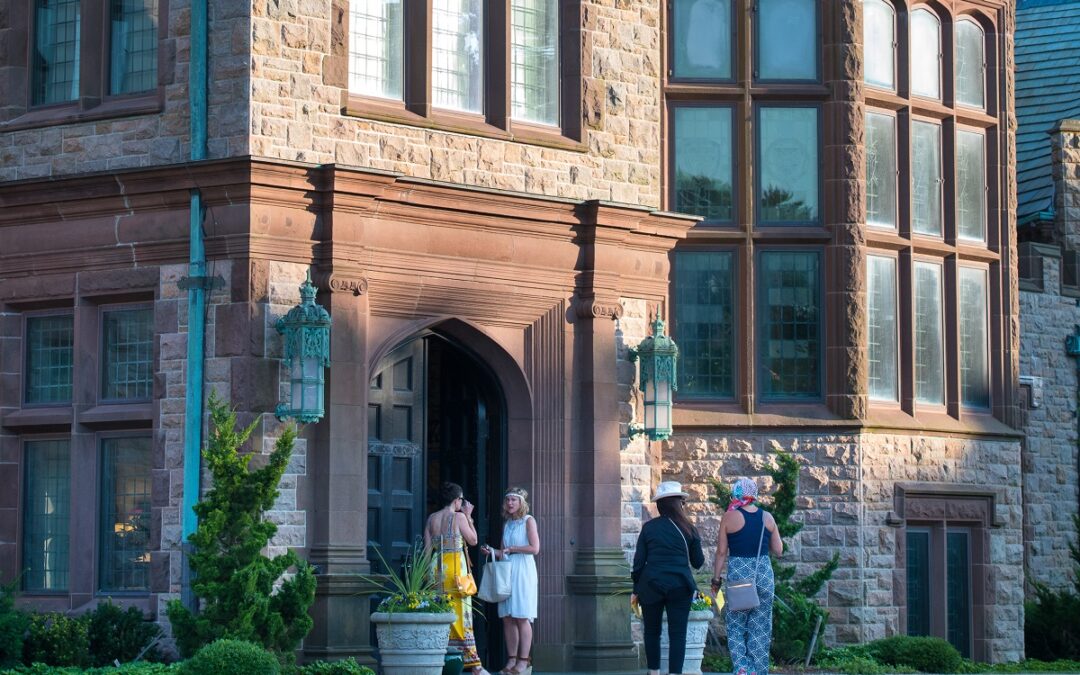
by NRF User | Apr 30, 2019 | NRF News
Spring is here, and the Newport Restoration Foundation is ready to begin yet another exciting season. NRF’s three museums: Rough Point Museum, Whitehorne House Museum, and Prescott Farm will offer a variety of free and ticketed programs for all ages and interests. Please mark your calendars for upcoming special events including:
Ask a Gardener
Rough Point
April 27, May 25, June 29 / 11:00-11:30 am
Free with house or grounds admission
Tour the Rough Point grounds in the company of experts – once a month our estate gardeners share their expertise on a range of topics from plant identification to organic garden care. Get insider tips about how the Rough Point staff keep the grounds looking lush and how to incorporate those practices in your own home garden. This event is free with house or grounds admission.
Second Sundays: Touch Tank with Save the Bay
Prescott Farm
May 12 / 12:00-3:00 pm / Free
Community comes together to enjoy the largest public open space on Aquidneck Island. Each month NRF joins with a non-profit partner to highlight the expansive history and horticulture of Prescott Farm. Explore the nature trails with our guest guides, chat up URI’s Master Gardeners, or climb inside the historic windmill – themes, guests, and activities change monthly! For our May event, Save the Bay brings their Traveling Touch Tank!
Stone Wall Workshop
Prescott Farm
June 1 / 9:30 am–12:30 pm
Registration: $40; advance purchase required. Space limited.
Learn the art of traditional stone wall construction and repair from the experts. Join master class instructors Chris and Dan Smith for their sixteenth year leading this hands-on workshop. Great for owners of historic properties in New England who have their own stone wall projects, or for anyone interested in the history and craft of stone walls.
Second Sundays: Bird Walking & Watching at the Farm
Prescott Farm
June 9 / 12:00-3:00 pm / Free
Community comes together to enjoy the largest public open space on Aquidneck Island. Each month NRF joins with a non-profit partner to highlight the expansive history and horticulture of Prescott Farm. Explore the nature trails with our guest guides, chat up URI’s Master Gardeners, or climb inside the historic windmill – themes, guests, and activities change monthly! Bird Walking & Watching at the Farm will be June’s theme.
The Myth & Mystique of Doris Duke’s Cultural Curiosity
Rough Point
June 13 / 5:00-7:00 pm
Tickets: $15
Gospel singing, belly-dancing, longboard surfing – Doris took up each of these hobbies by turn and moved on just as quickly. What prompted her interest? Was she welcomed in these communities? And what sort of legacy did she leave behind? This discussion-based program will take a closer look.
Newport County Free Days
Rough Point & Whitehorne House Museum
June 15 & 16 / 10:00 am–5:00 pm
Free to all Newport County residents with ID
Have you lived in Newport your whole life and always wondered what went on at Doris Duke’s place? Now’s your chance! Residents of Newport, Middletown, and Portsmouth, Jamestown, Tiverton, and Little Compton are invited to roam around Rough Point and enjoy one of the best views in Newport. Whitehorne House Museum will also be open free to Newport County residents 10:00 am – 4:00 pm through the weekend.
Details Matter: Making Furniture Microscopic
Rough Point
June 18 / 5:00-7:00 pm
Tickets: $15
What happens when a dovetail joint shrinks down to a few thousands of an inch? Miniatures artist Bill Robertson shares the stories and secrets of his 42-year career building tiny objects inspired by historic interiors, furniture, and decorative arts. His unique approach brings the Townsends and Goddards into the 21st century.
For more information on events and to purchase tickets, visit www.newportrestoration.org/events.
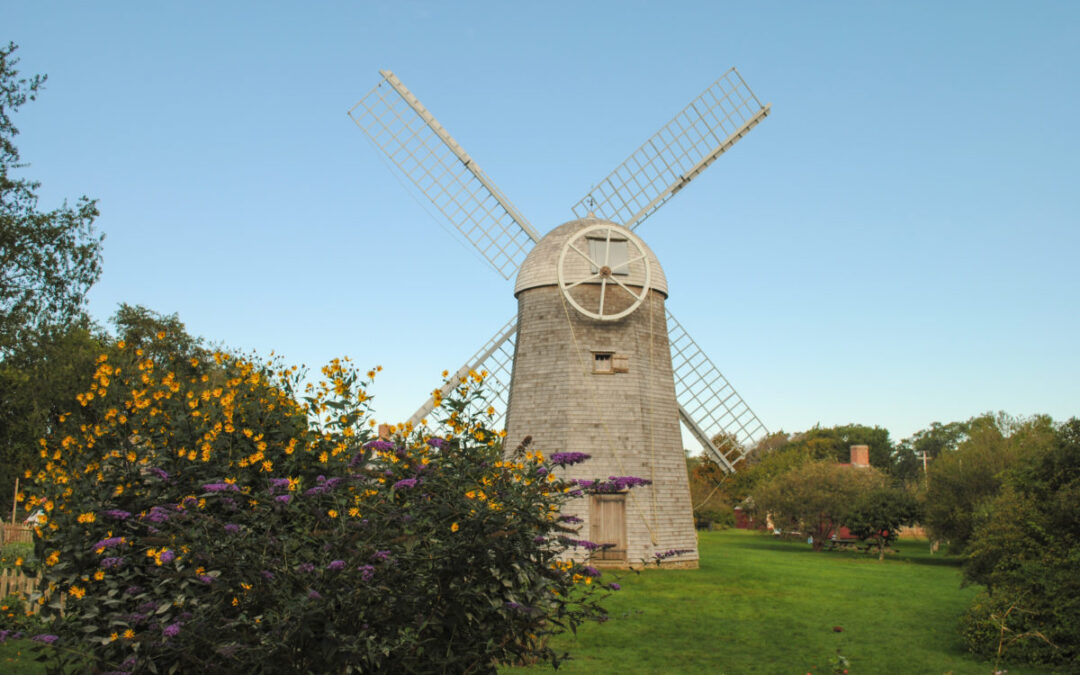
by NRF User | Apr 19, 2019 | NRF News
Prescott Farm may be the best kept secret on Aquidneck Island. This 40-acre property is the largest open space park on the island and boasts not only multiple historic buildings, but also a rare double capacity windmill from 1812. Doris Duke purchased the property in 1969 with the intention of preserving the historic farmland and creating a space for a number of additional historic buildings that the Newport Restoration Foundation was in the process of rescuing from imminent demolition.
The only original building on the property is the impressive Nicholas-Overing House, built circa 1730. This formal 18th century building was home to the Overing family at the time of the American Revolution. British General Richard Prescott, the commander of the 6,000 British troops who occupied Newport during the Revolutionary War, decided to make the Overing’s house his country headquarters. It was here that Patriot commander Lt. Col. William Barton kidnapped General Prescott during a nighttime raid. Prescott was caught in only his night shirt and was not allowed to dress before being marched back to Narragansett Bay. This story spread rapidly and not only earned Prescott the nickname the Barefoot General but also resulted in Overing farm becoming colloquially known as Prescott Farm in homage to this early American victory.
Today Prescott Farm’s landscape harkens back to the rural Aquidneck Island of the 18th and 19th centuries, with gentle sloping land, fields lined with stonewalls and areas of scrub trees and brush. The farm is also home to both a kitchen garden and an herb garden which are tended to by a dedicated team from the University of Rhode Island’s Master Gardener program. These living laboratories marry colonial horticultural practices with more modern gardening techniques. Every year produce harvested from the gardens is donated to Lucy’s Hearth, a local women’s shelter on the island. Close to 700 pounds of food is donated every year.
The park is open year round daily from dawn until dusk. This season, Prescott Farm will be a site of community collaboration and engagement. During our new (and free!) Second Sunday programs, NRF will join forces with different community organizations across Aquidneck Island and beyond. These collaborations will highlight the expansive history and horticulture of the area as well as encourage exploration of the park’s nature trails, the historic windmill, and the work of URI’s Master Gardeners. Each month will feature a different community partner, theme, and activities.
NRF is excited to welcome Save the Bay for our next Second Sunday taking place on May 12 from 12:00 – 3:00 pm! They will be bringing their Traveling Touch Tank for visitors to get up close and personal with some new friends from the sea. Click here for more information about this program and upcoming monthly themes! Don’t miss this incredible opportunity to engage with your community and take advantage of Aquidneck Island’s best kept secret.
By Rachael Guadagni, Education & Public Engagement Assistant at Newport Restoration Foundation
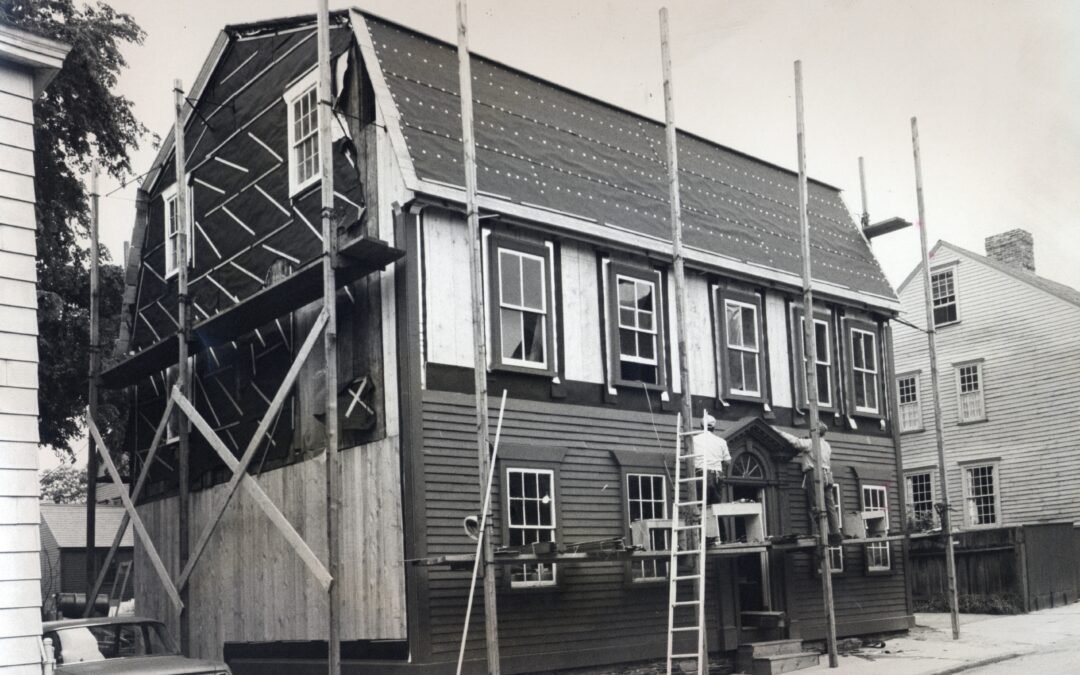
by NRF User | Apr 17, 2019 | NRF News
I am pleased to announce that Newport Restoration Foundation is launching a monthly giving program – the Restoration Partners program – and I hope you will consider joining us in this new initiative. You may already be familiar with monthly giving programs, as there are many national charities and local organizations that have formalized, popular programs. Perhaps you are participating in one right now.
Monthly donors give automatically each month through their credit card or bank account. By participating in the Restoration Partners program, your monthly contribution can be directed immediately toward NRF’s ongoing work:
- To understand the impact of climate change and sea level rise on Newport and share what we learn with local citizens;
- To preserve some of Newport’s most important buildings, such as the William Vernon House, and assist with any unanticipated needs that arise from our stewardship;
- To provide unique opportunities for learning, such as our Preservation Pop-Ups, Stone Wall workshops, and Whitehorne House lectures, and foster a greater appreciation for the tradition of Colonial craftsmanship in Newport.
There are many advantages to joining the Restoration Partners program. Your monthly gift is fully tax-deductible and automatically charged to your credit card or bank account. As a Partner you will receive special benefits and invitations to private events. We will send you a year-end tax statement outlining your cumulative giving.
Just imagine what Newport would look like had our founder, Doris Duke, not invested in its architectural heritage? Members of the Restoration Partners program are vital in providing NRF with ongoing and consistent support to help us perpetuate Doris Duke’s legacy of preserving and protecting the cultural heritage of the city we love. As this is NRF’s 51st year of preserving Newport, our goal is to sign up at least 51 members of the community to participate in this new endeavor. We hope you will be among the first 51 to join us.
Please visit our website at www.newportrestoration.org/donate to learn more about the program and to make your gift. Thank you for supporting NRF and for caring about the work we do to preserve Newport’s unparalleled heritage.
Mark Thompson
Executive Director






